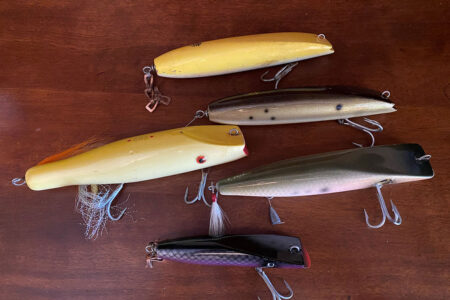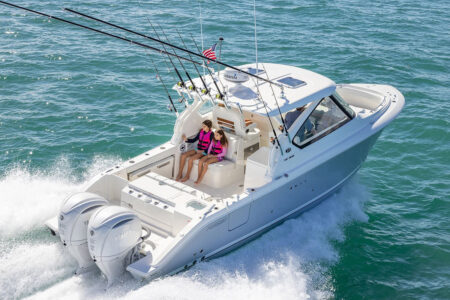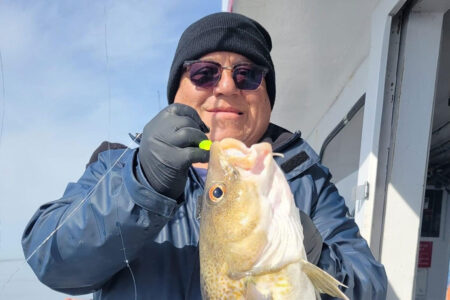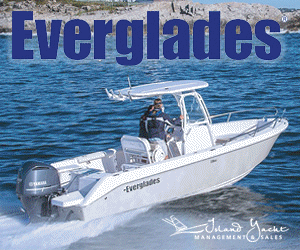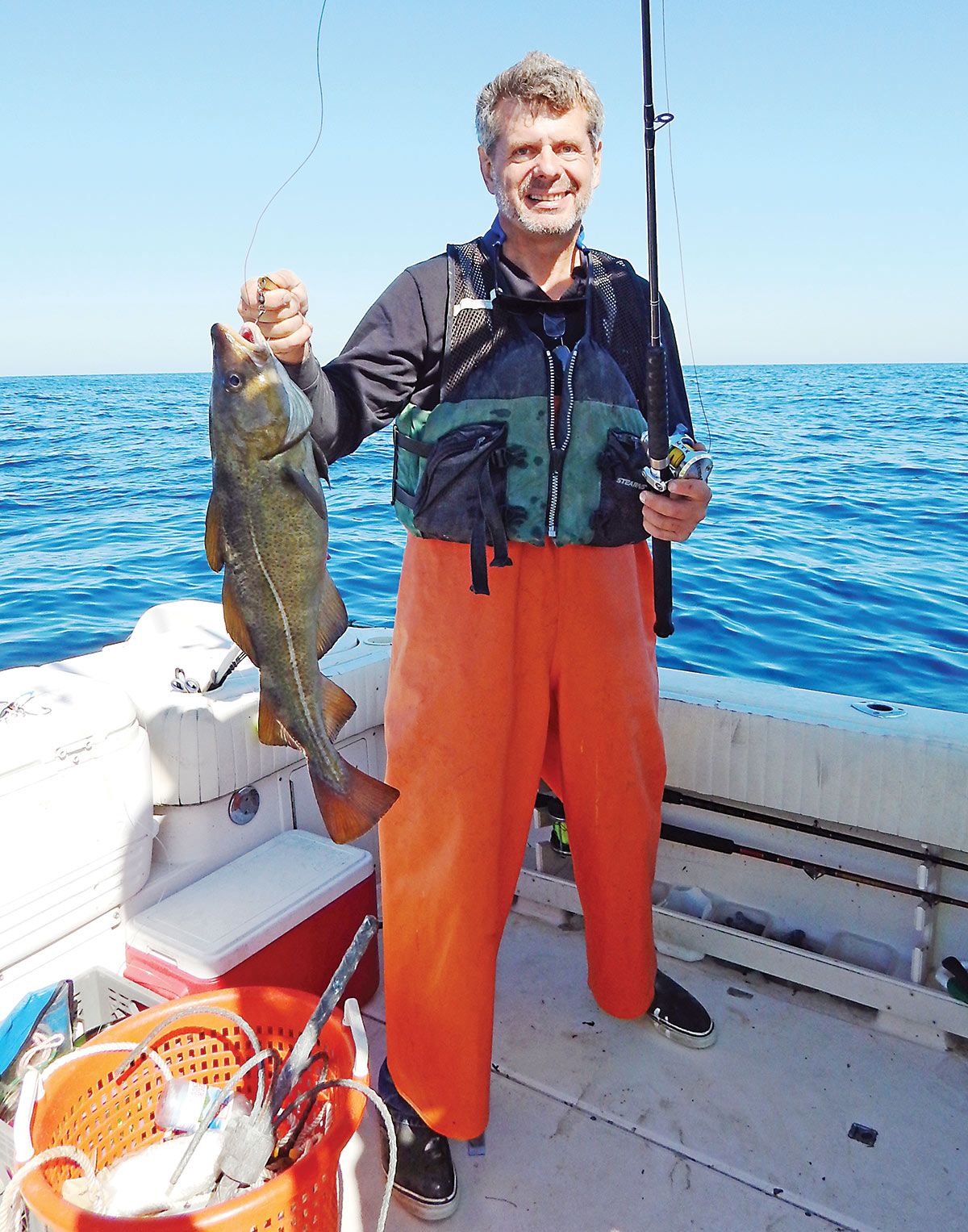
Wreck fishing for northeast anglers is a workable strategy for rod-bending action practically 12months a year, weather permitting. The compelling reason to put wreck hopping on your summertime sport fishing menu is simple—you are putting your baits and lures where the fish are usually concentrated in great numbers and you are not burning daylight trying to find your targeted fish du jour. All of your time is spent trying to catch them! The modus operandi for wreck fishing changes with the seasons, and the summer months typically offer the most varied possibilities for success. Let’s take a closer look at how to make this happen for your remaining summer calendar.
Unlike some of the other seasons where wreck fishing is more limited or restrictive on how to work the structure, summertime wreck fishing allows northeast anglers to be creative in their approach. One of the most important factors in planning a wreck trip besides having great numbers for low traffic structure, is to have a boat that can handle changing conditions. With 14-plus hours of daylight in August and early September, wind and weather patterns have ample time to change their attitude, and you don’t want to be caught 20to30 miles offshore in a smallish boat that can’t handle a sudden summer squall or a wind-against tide situation in your inlet. I bounce around the inshore and offshore wrecks with my EdgeWater 228 CC, and there are those occasional days that I wish I had stayed in the bay. I consider a 23-foot sportfisherthe minimum size platform to handle this fishery, which should provide ample room onboard for a crew of three to four anglers, their gear and enough boat to comfortably handle the trip.
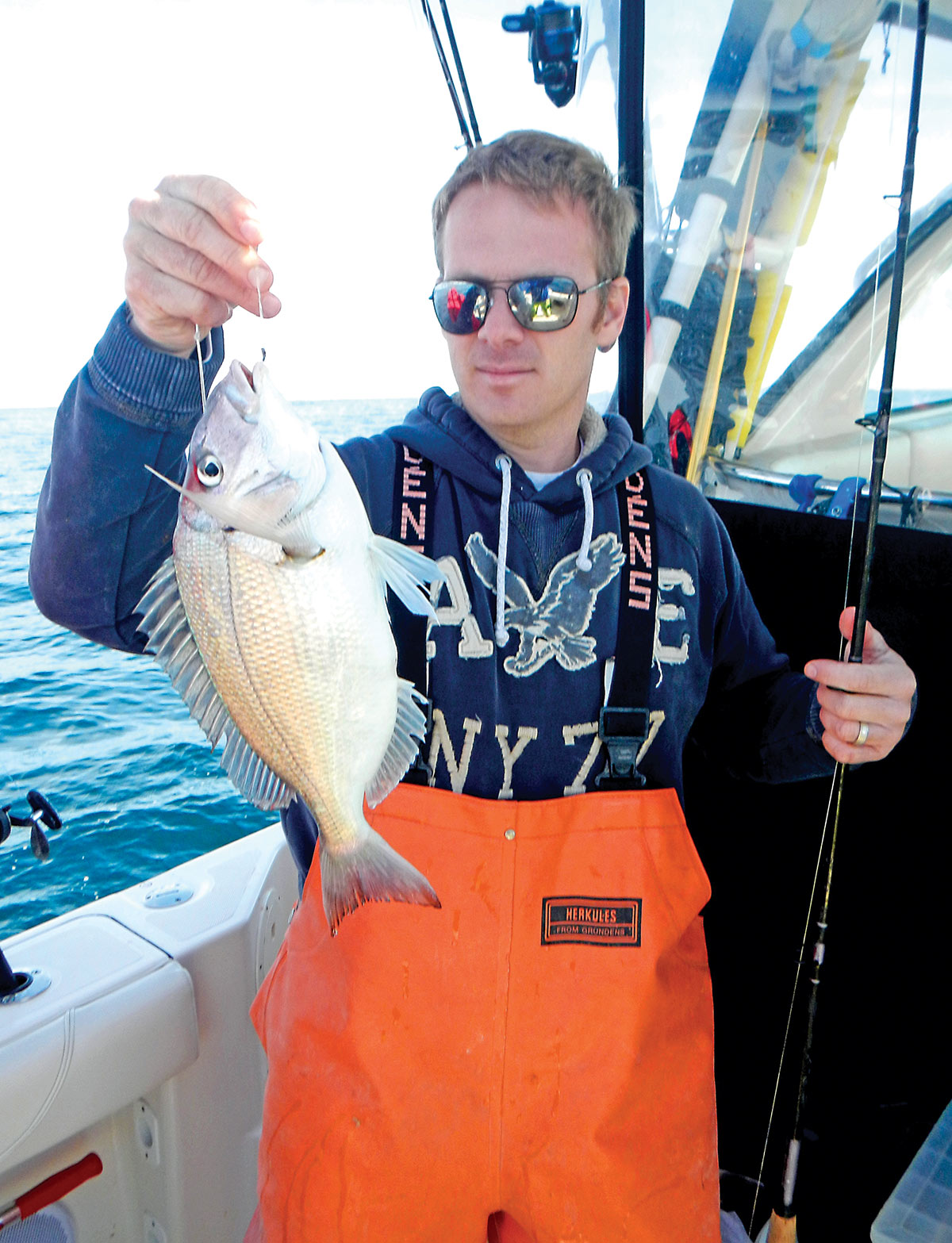
Develop a Plan
The successful summertime wreck trip starts out with a planned approach, but remember the old soldier’s lament—no plan typically survives first contact with the enemy. If I haven’t fished in a few days or if a stalled weather system has finally moved on, I usually call up some of the local tackle shops and charter boat captains to gather intel and review the latest fishing reports. It’s also a great idea to check the local sea buoys online (www.ndbc.noaa.gov) for water temps, prevailing winds and the coastal weather forecast.
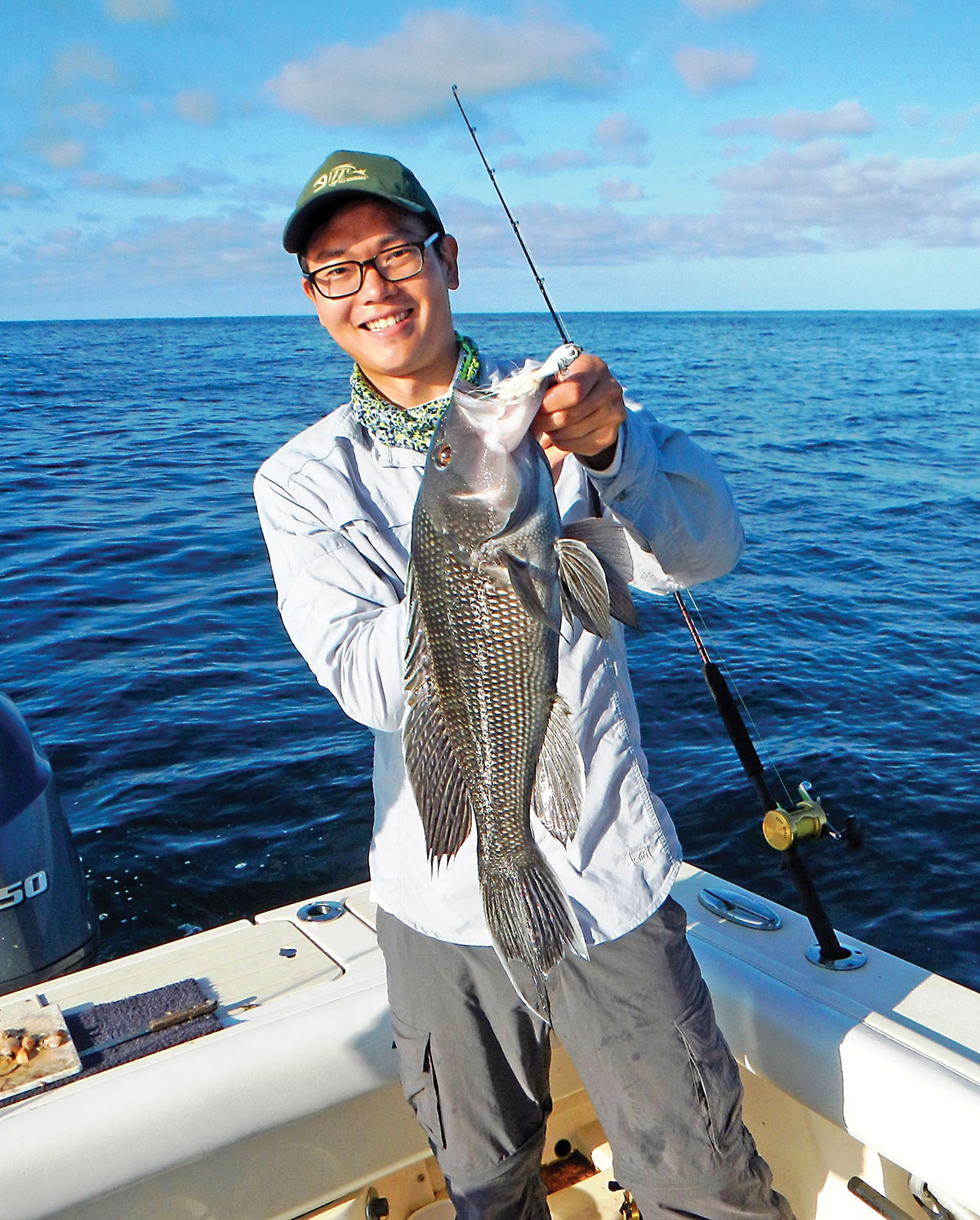
Once I get a feel for what is happening in real time, I temper that with my 40-plus years of fishing logs to ascertain if what has happened in the past will have any relationship to what might happen again in the future. When planning a wreck trip, it’s always a good idea to have more than one spot on the agenda. The reasons for this are many, including competitive traffic from party boats and locals, an absence of quality species due to migration patterns, incompatible temps or forage conditions, uncooperative currents or moon phases, reshaping of the wreck due to winter storms, etc. I usually plug in at least a half dozen spots on the wreck hopping menu and hit a few in 20-, 25- and 30-fathom areas on the way out or heading back to home port, depending on conditions that only make themselves known when I’m out on the briny. If there’s too much traffic at my initially selected spot, or if the fish are in an uncooperative mood or non-resident, I shift to the second choice on the menu. The key ingredient to summertime wreck hopping is to manage your timeline; give yourself enough opportunity at the spots you’ve chosen to have the best chance for success, which brings us to the next topic: what to do when you get there.
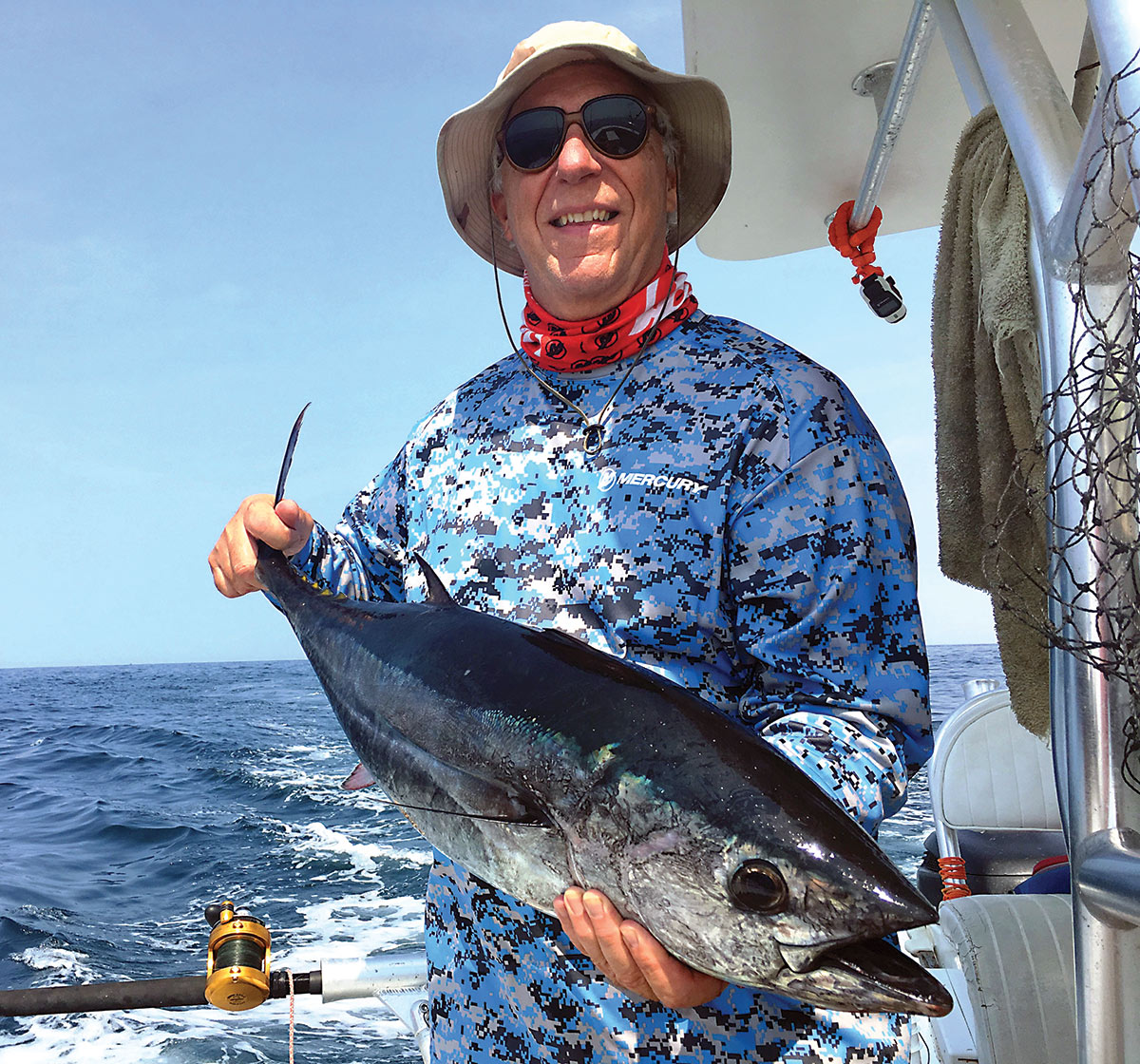
displayed by the author.
Triple Threat Approach
The best part of summertime wreck fishing is that you can approach it from a trio of different perspectives: trolling, drifting and anchored over the structure. When targeting pelagics like sharks and tuna, all three methods work, depending on the conditions when you get there and who is home when you arrive. When trolling a wreck for pelagics, I target two or three pieces of bottom in the general area and troll from one to another, changing directions and being sure to save any bites or knockdowns on the chartplotter. After a while, the speed, direction of the troll and location of the baits begin to make sense on your screen. Trolling around the deepwater wrecks is usually an early morning game (sunrise to 9am) and the bite frequently shuts off once that summer sun starts to rise in the eastern sky. It’s imperative that you are there at the right moment to catch the bite, or be condemned to listening to everyone else’s success on the VHF. Depending on where you call home port and the proximity of any summertime Gulfstream pinch-off eddies, you can expect to encounter bluefin and yellowfin tuna, white marlin, dorado, plus the occasional wahoo or blue marlin. Don’t be surprised if an angry mako crashes your trolled baits and steals your rig. They are the kings of the coastal seas and take what they want, when they want it.
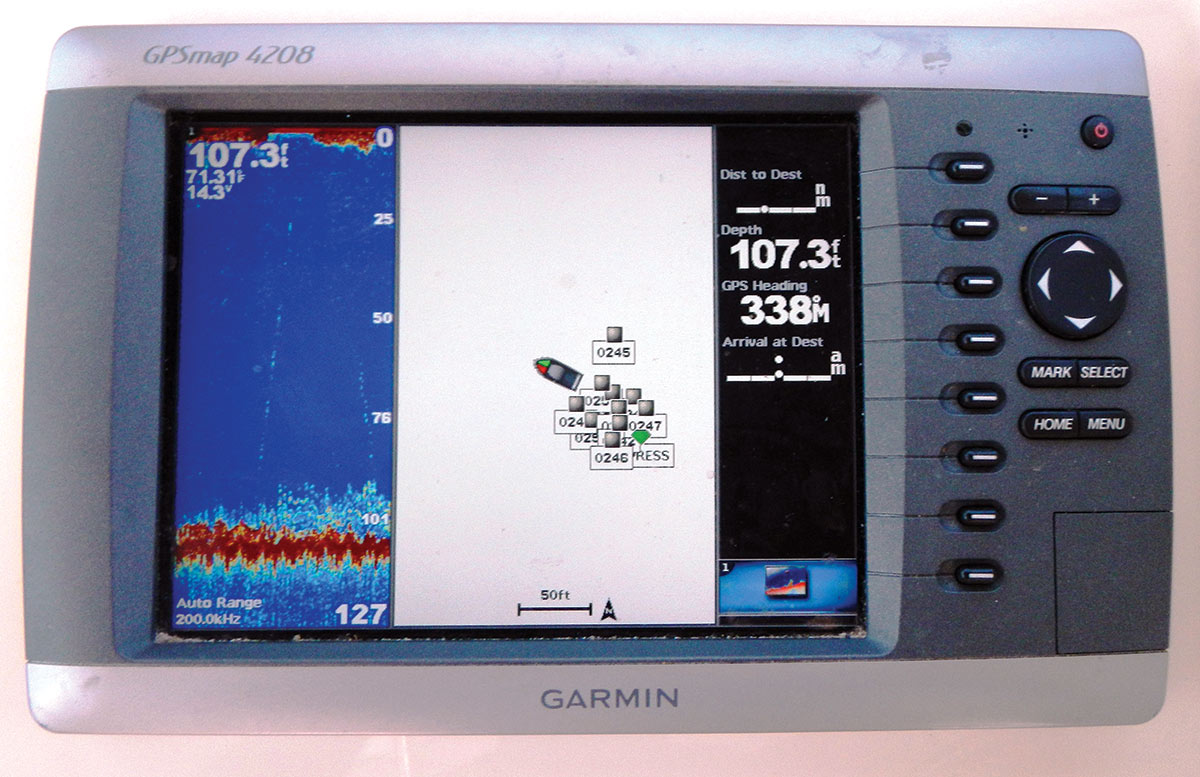
We often observe pods of bluefin in the proximity of the offshore structure hanging tight to the bottom, rooting out sand eels from the sandy seabed floor. When you catch this activity on your echo sounder and repeated passes overhead fail to raise the tuna into your spread, it’s time to break out the jigs and join the party. Sharkers and tuna chunkers also find that setting up their drifts or anchoring near deep water wrecks in proximity to fathom curve migration routes produces excellent results.
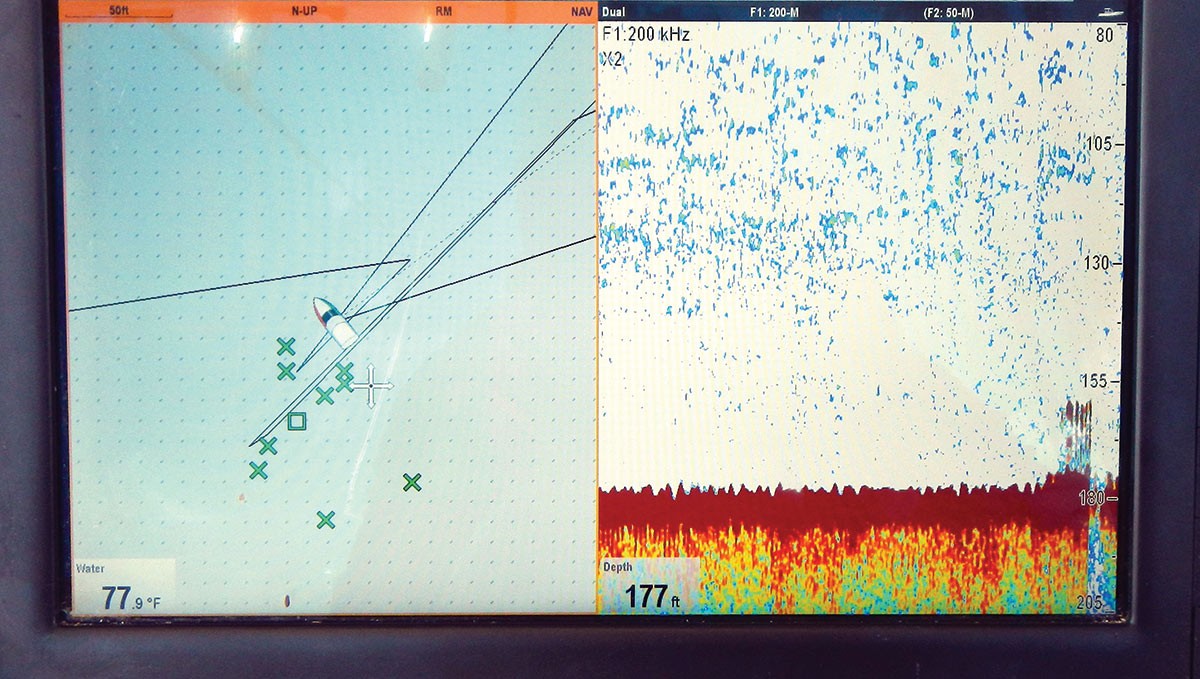
When targeting groundfish, anchoring or drifting are the preferred approaches, and the best method of choice should be determined after you observe what your echo sounder is telling you is living down below and where/how it is stacked up over the structure. If anchoring over the wreck, ascertain how it lays on the bottom. This is paramount for success, so that you can totally profile the structure on your chartplotter screen in max zoom mode. It is tough to anchor over a wreck that lays north/south, especially if the wind is blowing out of the north or south, since there’s not a lot of profile to hit when you drop the hook and ease your vessel back downwind/down sea/down current. Choosing a wreck or structure that lays perpendicular to the wind/waves (east/west) might be a better idea given these north or sound wind conditions, since it’s theoretically easier to anchor over it, and you can hit more spots along its length with those prevailing wind and sea conditions. The wild cards that will spoil your party plans are littoral currents and moon phase, and if the sun and moon are out at the same time, which has a tendency to play havoc with existing currents.
Map Out Your Target
Once you have arrived at the wreck, the next step is to drop a high visibility (yellow, orange, red) marker float on each end of the structure to set up the anchoring process. You can accomplish the same task electronically with a large screen (10-to12-inch) GPS chartplotter by zooming into max detail mode and saving the marks of the wreck’s perimeter, high spots and low spots on the screen. Then drift away from the wreck a few hundred yards to determine the effect that wind, tide, current and wave action have on the drift of your vessel. Motor back to the floats or saved screen marks, splitting them dead center like kicking a field goal and keeping your compass course, continue a few hundred yards upwind/up-tide past them. At this point, drop the hook, set the anchor and if you did everything by the numbers, you should catch/hold the bottom and drift back right between the two marker floats, ready to fish. Of course it’s not always that simple a process and this is where a second anchor, either in the form of a grappling hook or a two-anchor bridling setup is required.
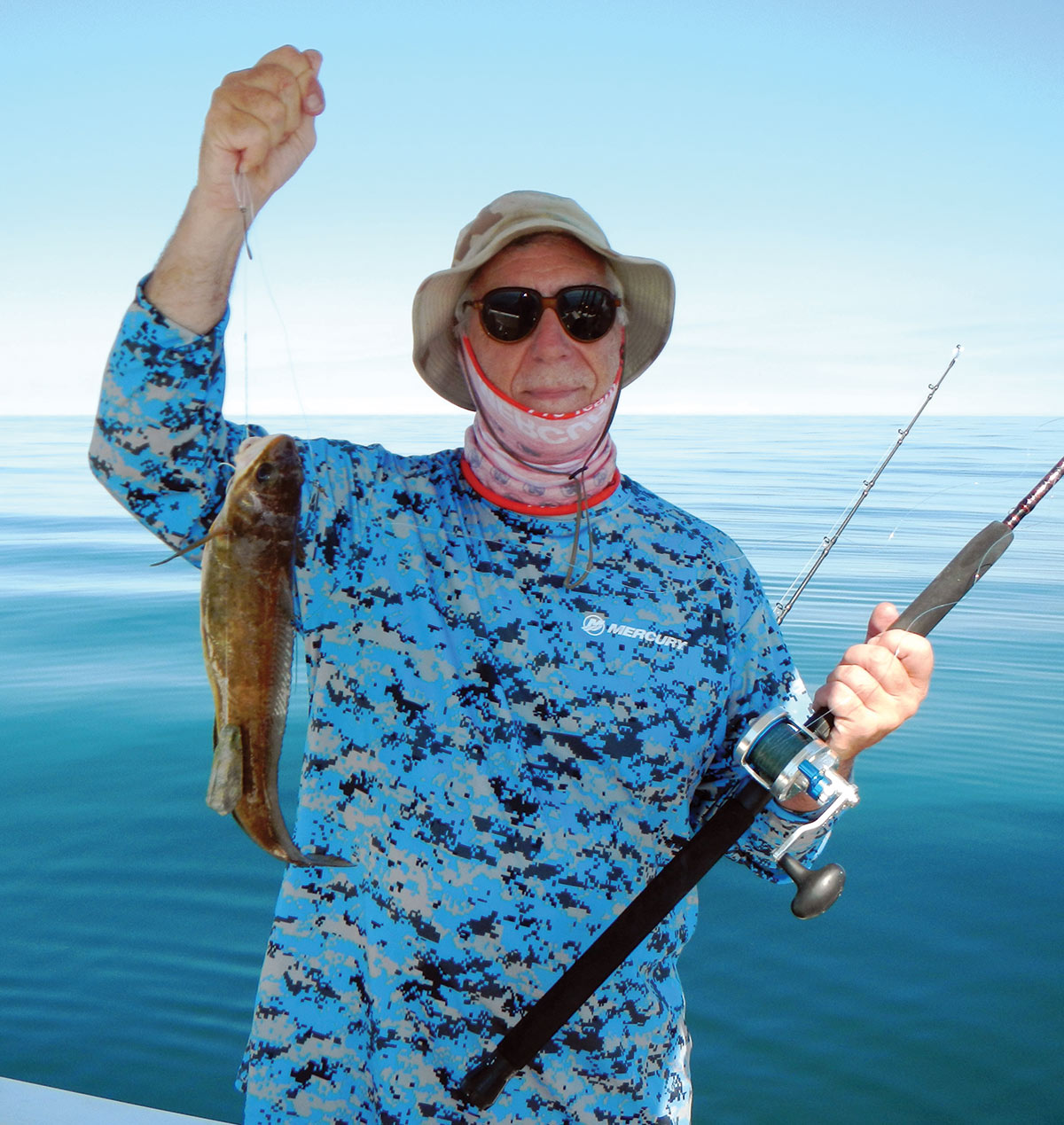
Drifting a wreck can be a simple way to hit multiple spots during the course of the day and is my typical approach. If the current is too strong, and the drift is too fast, employing a drift anchor can give you more loiter time over the wreck. One of my go-to approaches is to “stall” the boat over the wreck by using the engine to head into the wind and current and apply just enough power and rudder to keep my anglers positioned over the structure’s sweet spot. Your crew can drop down their baits to the residents down below,and I’ve had a lot of success employing this method. It allows you to really explore every piece of the structure, once again relying on your chartplotter and echo sounder to keep you over productive territory.
When jigging for groundfish like cod, pollock or sea bass, I like to keep it simple with a snap-swivel tied to the end wind-on leader via an improved clinch knot and attach a hammered silver or gold jig with/without a surge tube tail (red, lime green, white, yellow). If there is an absence of sticky structure down below, or the fish are higher up and are clear of the wreck, I might tie on a teaser rig (curly tail, surgical tube, Spro bucktail jig, etc.) via a dropper loop about 2 feet up from the jig. I have scored numerous double header cod, pollock and sea bass employing this rig, but you will also lose a lot of jigs this way, so be sure to bring extras. My charter fares have a number of over 40-pound cod during these summertime wreck trips, and many have been duped by this jig and teaser setup, so it works!
Tackle for the Task
As an outdoor writer and weekend charter boat captain, I upgrade my tackle every few years to stay up on the latest trends. My current favorite choice for general wreck and rock pile work is a graphite/fiberglass composite rod in the 6-to6-1/2-foot range, armed with a trigger grip graphite seat and a conventional reel (with or without a level wind). The graphite/fiberglass blend rods are more forgiving and take extreme punishment from hefting large fish off the bottom in extreme conditions.
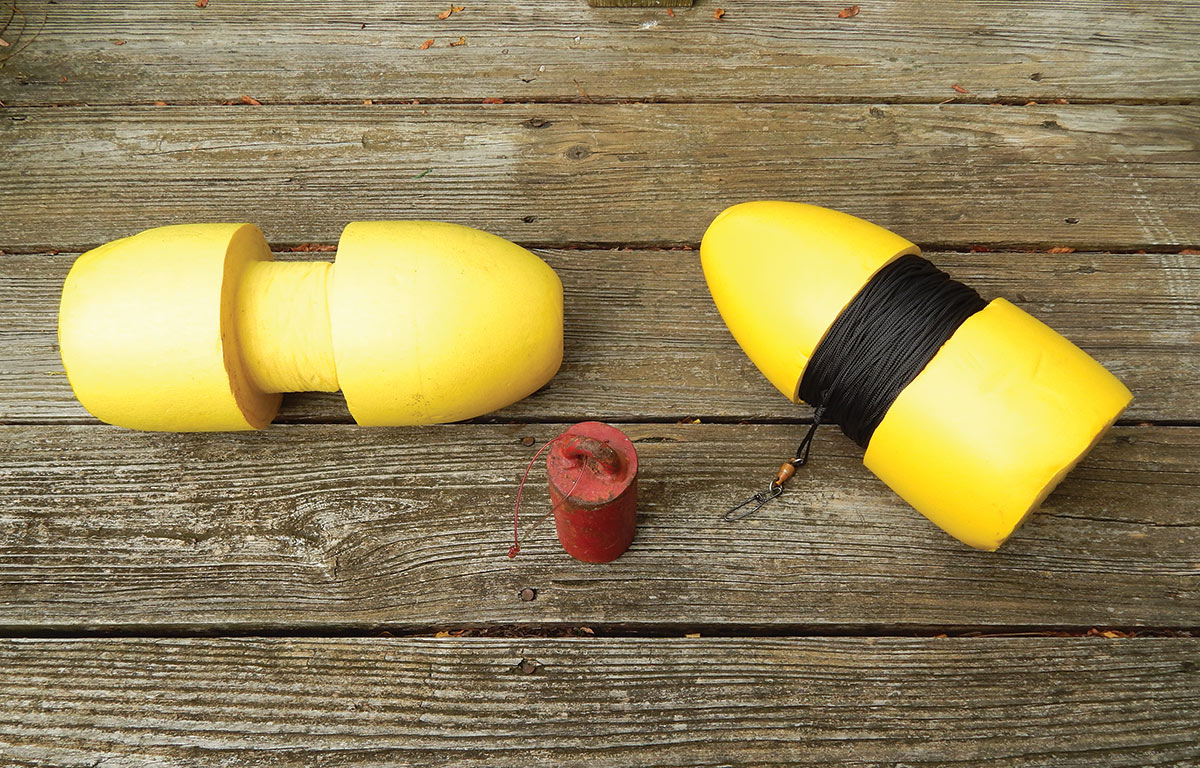
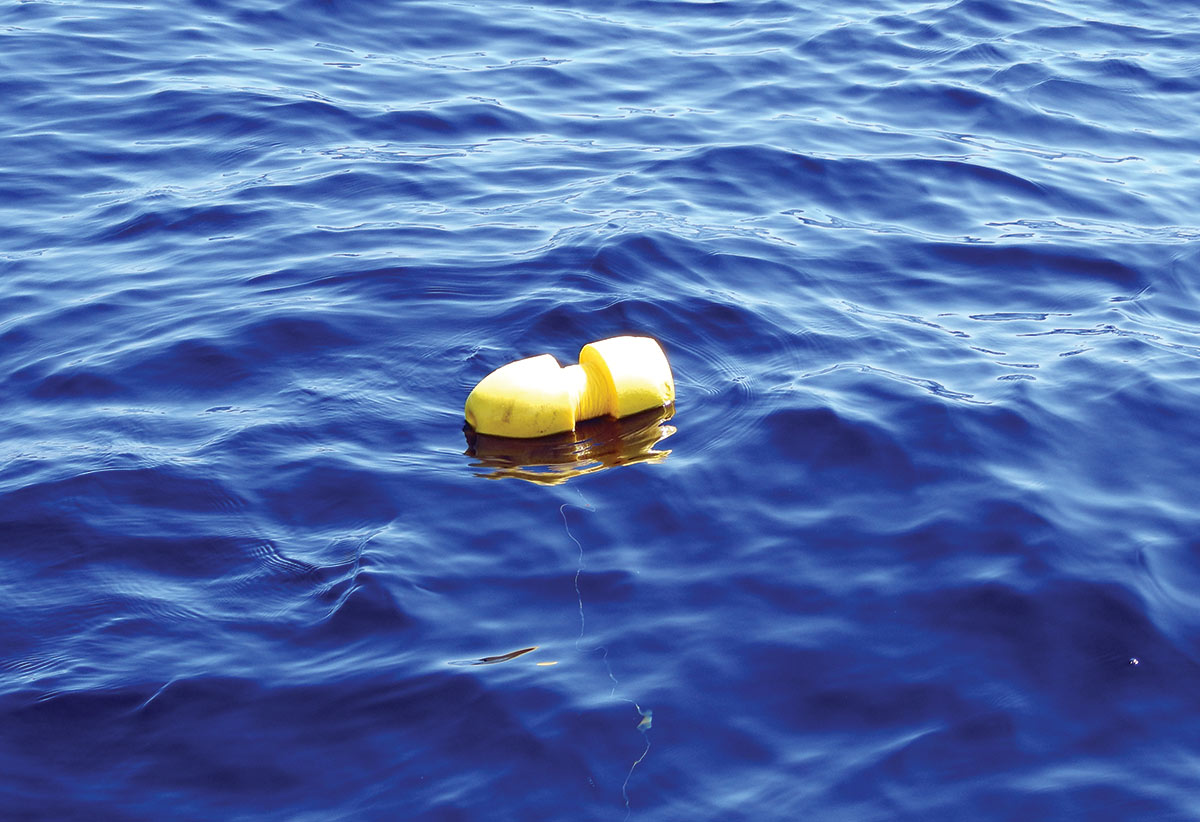
I have had a lot of success over the past few seasons with Penn’s moderately priced lineup of Rampage jigging rods, with the 6-foot 6-inch (30-80lb braid) and the 6-foot 2-inch (50-100lb braid) models my favorites. These graphite/fiberglass modulus blanks are relatively strong and lightweight and hold a lot of lead with their medium/heavy power and fast taper actions, but still sport a sensitive tip to feel those “ghost” pickups of wary bottom dwellers. They are also strong enough to deal with tuna jigging, if we need to switch over on short notice. I also use Shimano Trevala, Shakespeare Ugly Stik Tiger Lite and Tsunami Ocean Max Gold rods, which are all equally adept at either jigging or dropping 16ounces of lead to the bottom with a double or triple hook bait rig.
It’s hard to beat some of the latest graphite or precision machined aluminum reels that have hit the market over the past few seasons, and I have mixed in some old favorites with more contemporary gear. I currently use Avet SX5.3 G2, Maxel Ocean Max #09 and Penn 320LD single speed, lever drag reels. Shimano, Daiwa, Okuma, Accurate and others all make wonderful gear and it’s a matter of taste and budget when choosing your rods and reels. Super braid line rules when bottom dropping in depths of 60feet or more due to its limited stretch and reduced hydro-dynamic profile. Keeping your super braid on the lighter side (30- to 40-pound test) typically reduces water resistance when fishing in heavy currents and allows you to hold the bottom with less lead, which translates to more vertical rod angles and increased sensitivity to what’s going on down below. I spool up my reels with hi-vis super braid line with a 10-yard mono topshot and have had great results with Western Filament TUF-Line, PowerProMaxcuarto, Maxima Braid 8 and Spiderwire Stealth. Line choice is a personal thing, and there are numerous manufacturers that make great products, so find one that you are comfortable with and get your reels ready to fish.
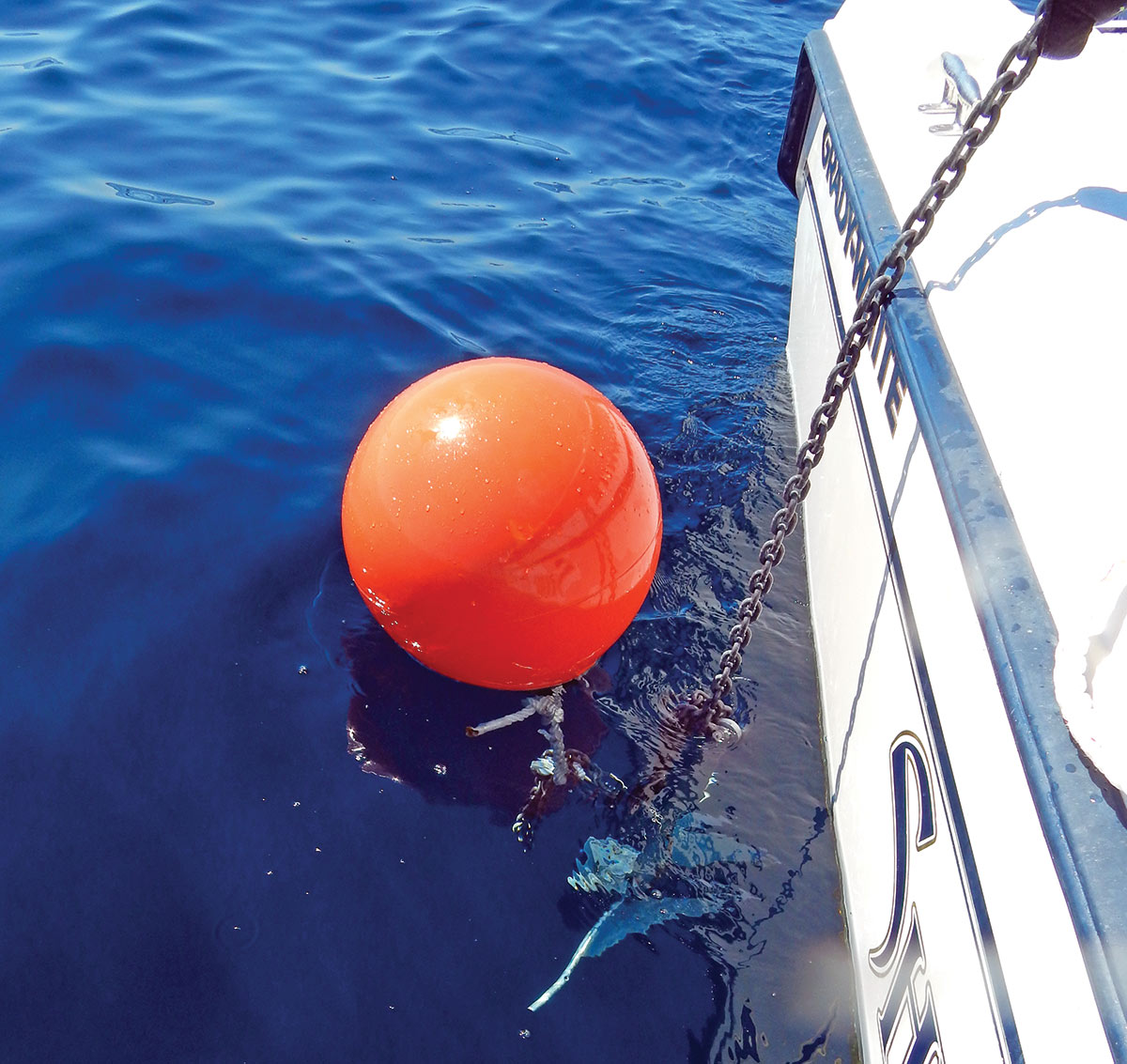
The simple dropper loop bottom fishing setup works great when fishing summertime wrecks and reefs. I tie up a fresh dropper loop from the tag end of 40-pound mono spools and set these up with either two or three hooks coming off the leader about a foot apart, with a perfection loop knot at the top and a single overhand loop knot at the bottom for the sinker. The single overhand knot is strong enough to hold the sinker, but will break or pull out when snagged into sticky bottom, saving the rest of the rig. A 4-to5-foot long total length leader gives the hooks enough space in between so that they don’t tangle. I will pre-tie a few dozen 2/0, 3/0 and 4/0 Octopus hooks on short 8-inch leaders and simply loop them around the dropper loops onto the main leader, which is attached to a 75-pound snap swivel for quick change ability. If you have to swap out an entire bottom rig, it can be done in a snap. Keep it simple; you will probably be replacing a lot of rigs when fishing sticky structure, and this is the most affordable and effective way to do it, so learn your knots!
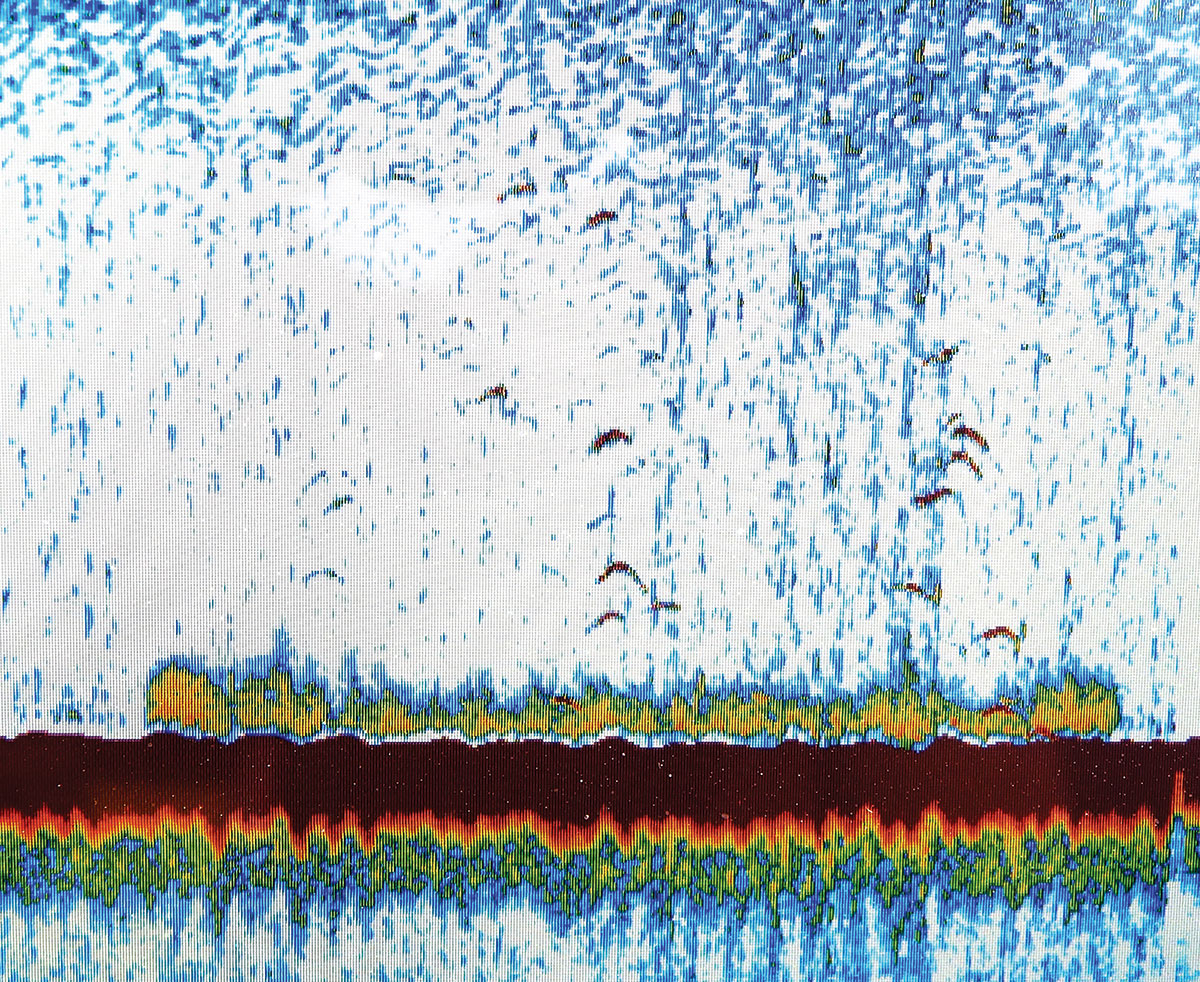
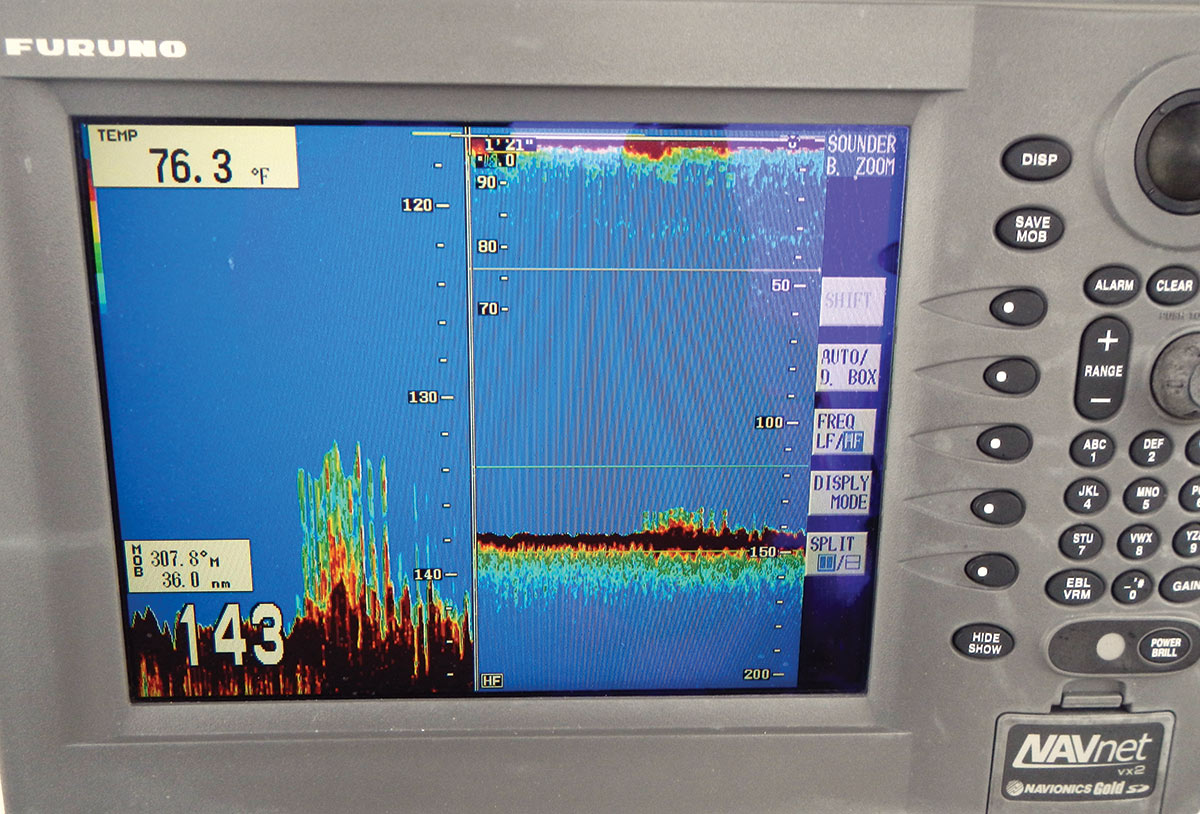
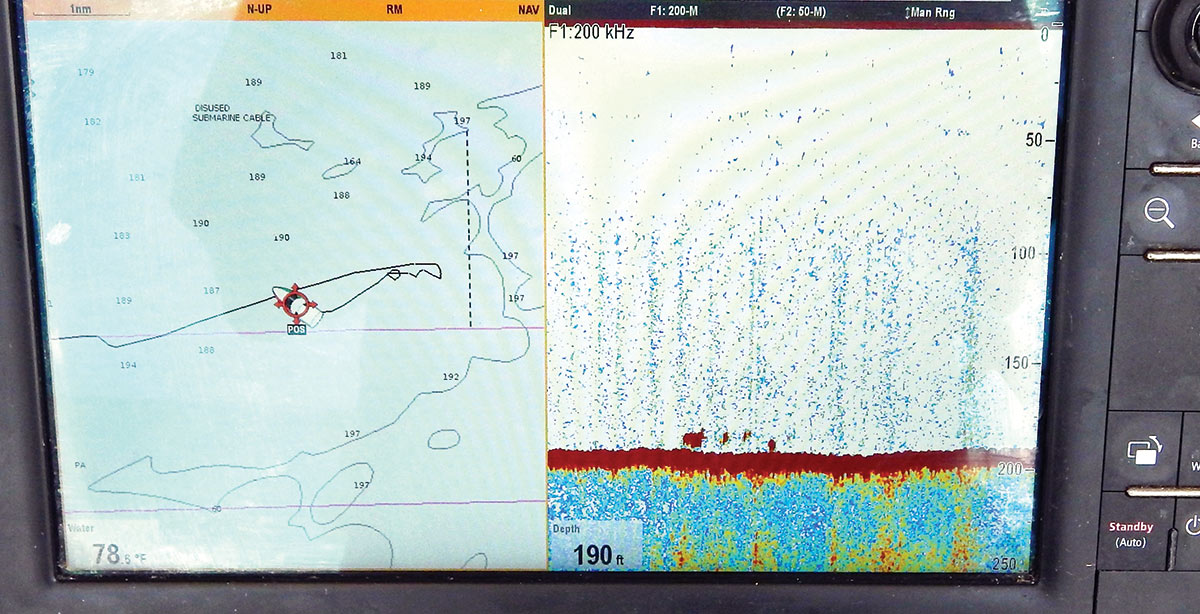
Some anglers prefer to adorn their dropper loop hooks with small squids or Mylar skirts for added attraction. I usually tie on a small jig in the 1/2- to 3/4-ounce range on one of my rig’s three dropper loops, which frequently gets more attention than the baited hooks. Depending on the species you are chasing, squid, fresh salted clams, crabs and fish strips all produce results, so take a few different baits in case they are finicky that day.
Summertime wreck hopping can be a total blast and offers predictable opportunity in a very unpredictable world. There’s an excellent chance that if you follow the blueprint that I’ve detailed here, you’re going to catch something. Be safe out there and if you have any questions or comments, reach out to me at www.marceejay.com.
